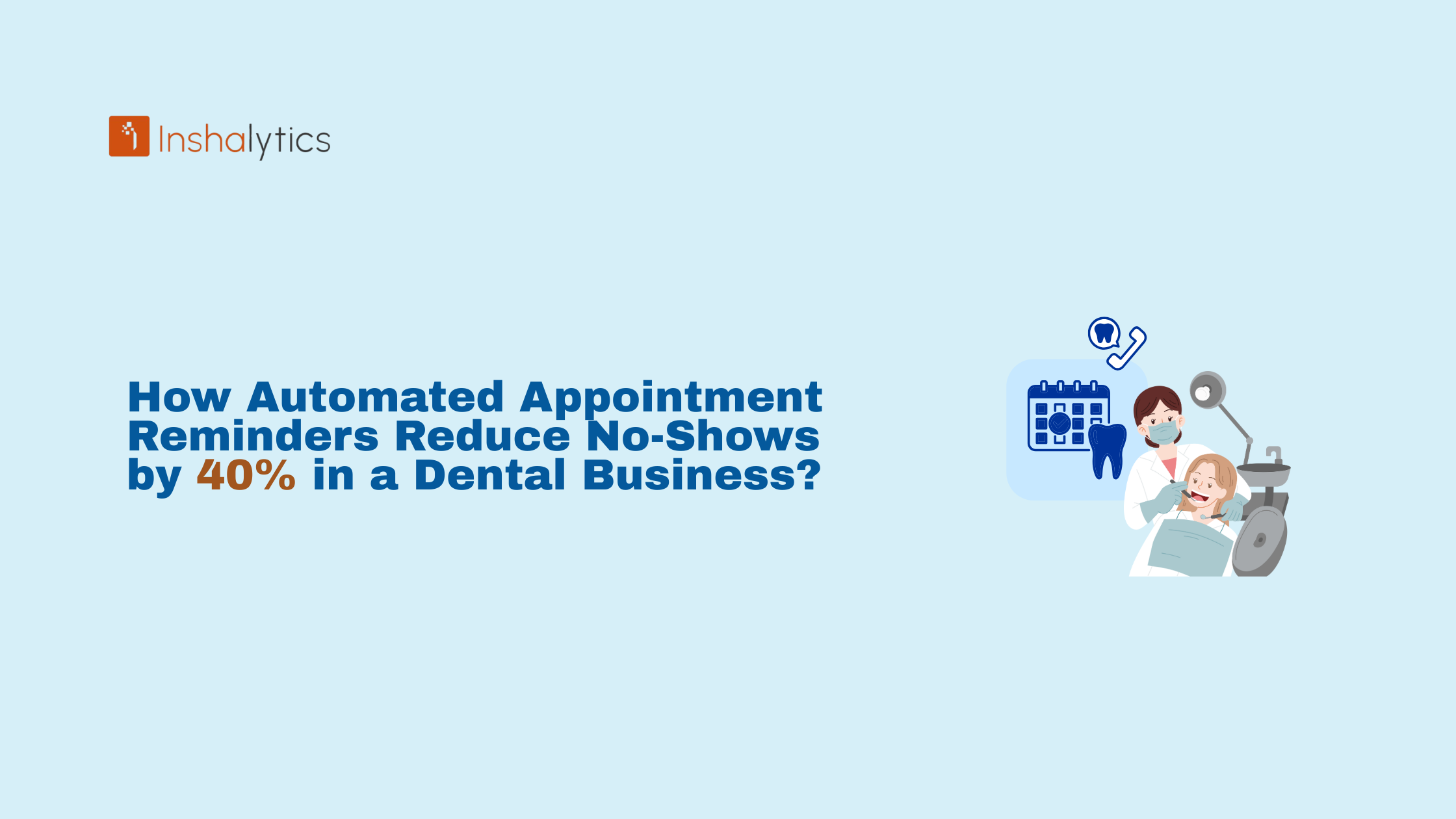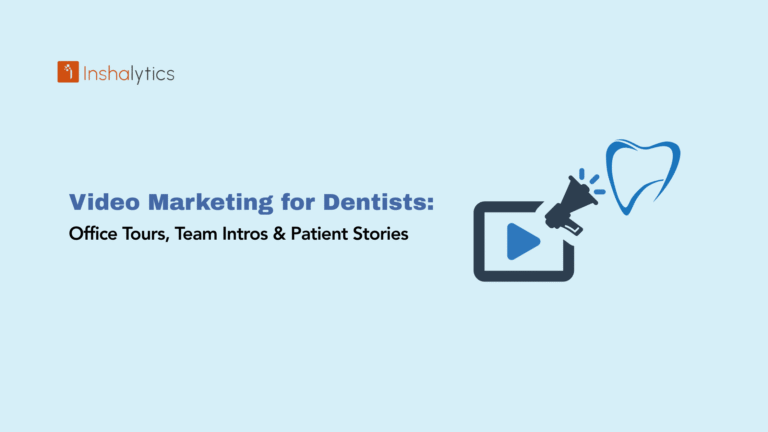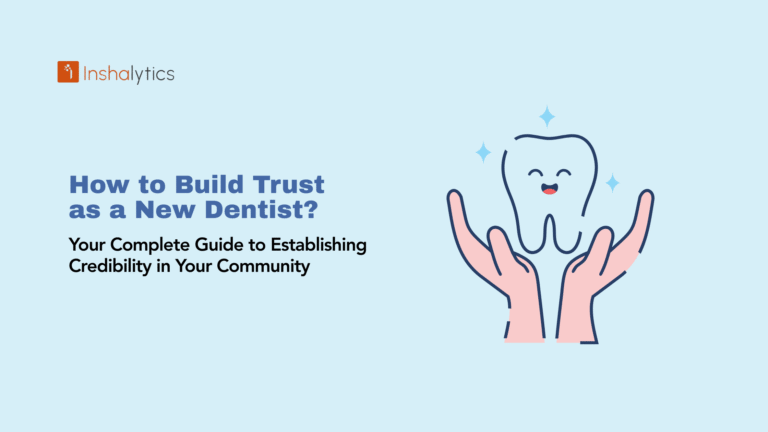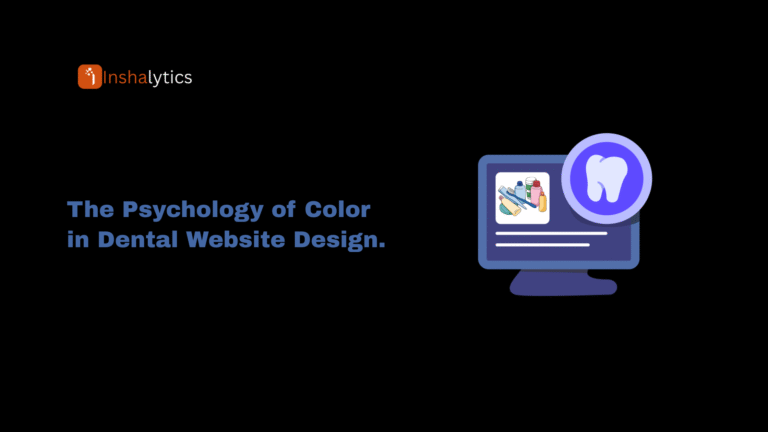Missed appointments are silently draining revenue from service-based businesses every single day. Whether you run a medical practice, dental office, salon, or consulting firm, no-shows represent more than just empty time slots they’re lost revenue, disrupted schedules, and wasted resources that directly impact your bottom line.
The good news? Automated appointment reminder systems have been proven to reduce no-show rates by 30-40%, with some businesses seeing reductions as high as 90%. This comprehensive guide will show you exactly how to implement an effective reminder system that keeps your schedule full and your clients showing up.
Table of Contents
Why Appointment No-Shows Cost Your Business?
Understanding the true cost of no-shows is the first step toward solving the problem. The average no-show rate across industries ranges from 15-30%, but the impact varies significantly by sector.
Financial Impact of Missed Appointments
For a medical practice seeing 40 patients daily at $150 per visit, a 20% no-show rate translates to $1,800 in lost revenue per day roughly $470,000 annually. In the healthcare industry alone, missed appointments cost over $150 billion each year in the United States.
The financial burden extends beyond immediate revenue loss. Each no-show means:
- Wasted staff time and operational costs
- Underutilized equipment and facilities
- Lost opportunities to serve other patients or clients
- Reduced efficiency across the entire operation
Operational Inefficiencies from No-Shows
No-shows create a ripple effect throughout your organization. Staff members prepare for appointments that never happen, schedules become unreliable, and planning becomes increasingly difficult. Appointment backlogs grow longer, forcing legitimate clients to wait weeks or months for available slots.
This operational chaos leads to decreased staff morale, increased stress levels, and higher turnover rates costs that are harder to quantify but equally damaging to your business.
Patient and Client Experience Consequences
When appointments are missed, everyone suffers. Clients who need care experience delays in treatment and reduced quality of service. Other potential clients who could have filled those slots miss out on timely appointments. The result is a degraded experience across the board that can damage your reputation and client loyalty.
How Automated Appointment Reminders Work?
Automated appointment reminder systems eliminate the manual, time-consuming process of calling or texting each client individually. These systems integrate with your existing calendar or scheduling software and send notifications automatically at predetermined intervals.
What Are Automated Appointment Reminder Systems?
An automated reminder system is software that connects to your scheduling platform and sends messages to clients before their appointments without requiring manual intervention. Once configured, the system runs continuously, sending reminders based on the rules you establish.
Modern systems offer customization options, including message templates, timing sequences, and multiple communication channels. Most importantly, they allow clients to confirm, cancel, or reschedule directly from the reminder message reducing the administrative burden on your staff.
Types of Reminder Channels
The most effective reminder strategies use multiple channels to reach clients where they’re most responsive:
SMS Text Messages deliver the highest engagement rates, with open rates reaching 98% within minutes of delivery. Text reminders are concise, immediate, and allow for quick confirmation responses. Studies show SMS reminders alone can reduce no-shows by 38-40%.
Email Appointment Reminders provide more space for detailed information, pre-appointment instructions, and attachments. While email open rates are lower (typically 20-30%), they’re excellent for advanced notifications and detailed preparation requirements.
Automated Voice Calls work particularly well for older demographics or clients who prefer traditional communication methods. Voice reminders can include personalized messages and offer options to confirm or cancel through phone menus.
The most successful businesses combine all three channels in a strategic sequence, using email for advance notice and SMS for time-sensitive final reminders.
Proven Results: 40% No-Show Reduction Statistics
The effectiveness of appointment reminders is backed by extensive research across multiple industries and healthcare settings.
Research-Backed Effectiveness Data
A comprehensive systematic review found that patients receiving appointment reminders showed a weighted mean reduction in non-attendance of 34% from baseline rates. Individual studies have demonstrated even more impressive results:
- SMS text reminders reduced no-show rates by 38% in a study by Imperial College London
- Automated systems achieved 29-40% reduction rates across various healthcare settings
- Practices using multi-channel reminders saw 30-60% improvements within three months
- Some businesses report reducing no-shows by up to 80-90% with properly implemented systems
Industry-Specific Success Rates
Different industries experience varying levels of success, but all show significant improvement:
Healthcare practices typically see 30-45% reductions, with specialty practices experiencing the highest gains. Mental health appointments, which traditionally have the highest no-show rates (30-45%), benefit particularly from automated reminders.
Dental offices report 35-50% decreases in missed appointments when using consistent reminder protocols.
Beauty and wellness services: including salons, spas, and fitness studios, see 40-60% reductions, partly because these appointments are often scheduled well in advance.
Professional services such as legal consultations and coaching sessions experience 30-40% improvements with strategic reminder implementation.
ROI Calculations and Cost Savings
The return on investment for automated reminder systems is typically realized within weeks. If preventing just five no-shows per month saves $750 in revenue (at $150 per appointment), and your reminder system costs $100 monthly, you’re seeing a 650% ROI.
Consider that most reminder systems cost between $50-200 per month, depending on volume and features. The time savings alone eliminating 10-15 hours of manual reminder calls per month often justifies the investment before calculating prevented no-shows.
Optimal Timing for Appointment Reminders
Timing is critical to reminder effectiveness. Send messages too early, and clients forget again. Send them too late, and there’s no time to reschedule or prepare.
The Multi-Stage Reminder Strategy
The most effective approach uses a sequence of reminders at strategic intervals:
Booking Confirmation (Immediate): Send an instant confirmation when the appointment is scheduled. This sets expectations immediately and provides reference information. Email works well here since clients can save the details.
Advance Reminder (72 Hours Before): This gives clients sufficient notice to cancel or reschedule within your policy guidelines. It’s far enough out to fill canceled slots with other clients. Email is ideal for this stage, especially when appointments require preparation.
Primary Reminder (24 Hours Before): Studies show that reminders sent 24 hours prior achieve a 45% reduction in no-shows. This is your most important touchpoint. Use SMS for maximum impact, as 98% of text messages are opened within three minutes.
Final Reminder (2-4 Hours Before): A last-minute text reminder catches clients who may have forgotten despite previous notifications. Keep this brief and action-oriented.
Research indicates that multiple reminders are significantly more effective than single notifications, but avoid overwhelming clients with excessive messages three to four touchpoints represent the optimal balance.
Timing Considerations by Appointment Type
Adjust your reminder schedule based on the nature of appointments:
- Brief consultations or routine visits: A Standard 24-hour reminder may suffice
- Appointments requiring preparation: 72-hour advance notice with instructions
- Long-scheduled appointments: Consider an additional one-week reminder
- Same-day or urgent appointments: 2-hour reminder only
Essential Elements of Effective Reminder Messages
The content of your reminder messages directly impacts their effectiveness. Include too little information, and clients can’t act on the reminder. Include too much, and they won’t read it.
What to Include in Every Reminder
Every appointment reminder should contain these core elements:
- Client name (personalization increases engagement)
- Appointment date and time (with time zone for virtual appointments)
- Location or access information (address, room number, video link)
- Provider or service name (especially in multi-provider practices)
- Duration estimate (helps clients plan their schedule)
- Contact information (phone number or email for questions)
Confirmation and Cancellation Options
Make it effortlessly easy for clients to confirm or cancel. Include clear instructions like “Reply C to confirm or call (555) 123-4567 to reschedule.” Confirmation links in emails should be prominent and mobile-friendly.
Confirmed appointments show 78% fewer no-shows compared to unconfirmed appointments, making this feature essential to your system’s effectiveness.
Message Length and Clarity Best Practices
Keep SMS messages under 160 characters when possible to avoid multi-part messages. Use clear, conversational language without medical jargon or complex terminology. Example:
“Hi Sarah, this is a reminder of your dental cleaning tomorrow (Tue, Oct 15) at 2:00 PM with Dr. Smith. Reply C to confirm or call 555-1234 to reschedule.”
For emails, use scannable formatting with bullet points for preparation instructions and bold text for critical details like date and time.
Implementation Guide: Setting Up Your Automated System
Successfully implementing an automated reminder system requires careful planning and systematic execution.
Choosing Appointment Reminder Software
Select software based on these critical factors:
Integration capabilities: Does it connect with your existing scheduling system (Google Calendar, Outlook, practice management software, EHR)?
Multi-channel support: Can it send SMS, email, and voice reminders from one platform?
Customization options: Can you create templates for different appointment types and customize timing sequences?
Two-way communication: Can clients respond to confirm, cancel, or reschedule?
Compliance features: For healthcare, ensure HIPAA compliance with Business Associate Agreements (BAAs).
Pricing structure: Understand whether you pay per message, per appointment, or flat monthly fees.
Configuring Reminder Sequences
Start with a baseline configuration and refine based on results:
- Set your primary reminder 24 hours before appointments
- Add a 72-hour advance reminder for appointments scheduled more than three days out
- Configure a 2-hour final reminder for same-day reinforcement
- Enable instant booking confirmations
Create message templates for different appointment types, incorporating specific instructions or preparation requirements where needed.
Staff Training Requirements
Even automated systems require staff understanding. Train your team on:
- How the system integrates with your scheduling platform
- Monitoring confirmation rates and following up with non-responders
- Handling client questions about reminders
- Manually overriding reminders when necessary
- Interpreting system reports and metrics
Dedicate 10-15 minutes daily to reviewing appointment confirmations and reaching out to clients who haven’t responded to automated reminders.
Measuring Success: Key Performance Metrics
Track these metrics to evaluate your reminder system’s effectiveness and identify opportunities for improvement:
Tracking No-Show Rate Reduction
Calculate your no-show rate monthly: (Number of no-shows ÷ Total scheduled appointments) × 100. Track this overall and by provider, appointment type, and day of week to identify patterns.
Most businesses see a 30-60% reduction within three months of implementing structured reminders. Compare your baseline (before implementation) with results at 30, 60, and 90 days.
Confirmation Rate Analysis
Monitor what percentage of clients confirm their appointments after receiving reminders. Confirmation rates above 75% indicate effective messaging and timing. Lower rates may signal:
- Messages are being filtered as spam
- Unclear confirmation instructions
- Wrong contact information on file
- Timing issues (too early or too late)
Additional Metrics to Monitor
Rescheduling vs. Cancellation Rates: Track how many clients reschedule rather than simply cancel. High rescheduling rates indicate your system is successfully keeping clients engaged.
Staff Time Savings: Measure hours saved by eliminating manual reminder calls. If staff previously spent 15 hours weekly on reminders, that’s a tangible efficiency gain.
Revenue Recovery: Calculate the dollar value of prevented no-shows by multiplying your reduction in no-shows by the average appointment value.
Common Mistakes to Avoid
Even with automated systems, certain pitfalls can undermine effectiveness.
Over-Messaging Clients
Sending too many reminders creates irritation and message fatigue. Stick to three or four maximum touchpoints. More messages don’t necessarily mean better results they often lead to clients ignoring all communications or opting out entirely.
Poor Message Timing
Sending reminders during inconvenient times reduces effectiveness. Avoid early morning (before 8 AM), late evening (after 9 PM), or weekend messages for weekday appointments. Time reminders to arrive during business hours when clients can easily respond.
Missing Key Information
Incomplete reminders force clients to search for details or call your office. Always include complete appointment information: date, time, location, provider name, and contact information. For virtual appointments, test your video links before sending them.
Failing to Provide Easy Opt-Out
Besides being legally required, easy opt-out options build trust. Include “Reply STOP to opt-out” in text messages and unsubscribe links in emails. Respect opt-out requests immediately to maintain positive client relationships.
Advanced Strategies for Further Reduction
Once your basic system is running smoothly, consider these advanced techniques for even better results.
Risk-Based Reminder Targeting
Some appointments have a higher no-show risk than others. Factors include:
- Long wait times between scheduling and appointment
- New patients versus established patients
- Certain demographics or insurance types
- Previous no-show history
Advanced systems can identify high-risk appointments and send additional reminders or trigger staff follow-up calls for those specific cases.
No-Show Policies and Financial Incentives
While reminders are your primary defense, clear policies reinforce the importance of attending appointments. Communicate your no-show policy during booking and in reminder messages. Options include:
- Cancellation fees for appointments canceled within 24 hours
- Deposit requirements for high-value appointments
- Limiting future scheduling for repeat offenders (healthcare permitting)
Frame policies positively: “We understand plans change. Please give us 24 hours’ notice so we can offer your spot to someone else.”
Waitlist Management Integration
Connect your reminder system to a waitlist function. When clients cancel with advance notice, automatically notify waitlisted clients of the opening. This transforms potential revenue loss into an opportunity.
Taking Action: Your Next Steps
Automated appointment reminders represent one of the highest-ROI improvements you can make to your service business. With proven 30-40% reductions in no-shows, most businesses recoup their investment within the first month.
Start by calculating your current no-show cost this number justifies the investment and provides your baseline for measuring success. Then select a reminder system that integrates with your existing tools and supports your preferred communication channels.
Configure a basic three-stage reminder sequence (72 hours, 24 hours, 2 hours), launch with simple templates, and refine based on your confirmation and attendance metrics. Within 90 days, you should see measurable improvement in attendance rates, staff efficiency, and recovered revenue.
The businesses achieving the best results share three characteristics: they use multi-channel reminders spaced appropriately, they make confirmation effortless with simple reply options, and they continuously monitor metrics to optimize their approach.
Stop losing revenue to preventable no-shows. Implement an automated reminder system today and join the thousands of businesses that have transformed their scheduling efficiency and client attendance rates.




